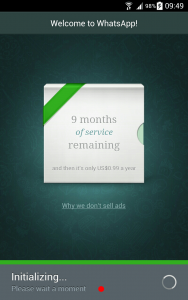Facebook Will Make Instant Articles Available to All Publishers
Facebook is opening up its Instant Articles program to all publishers starting on April 12, less than a year after launching the experiment with a handful of large media outlets.
Now anyone with a website and a Facebook page anywhere in the world will be able to take advantage of the program, which lets publishers host content directly on Facebook instead of posting links to direct users back to their own sites.
Facebook launched Instant Articles in May with less than a dozen publishers including the New York Times, BuzzFeed and NBC News, with the promise that it would significantly speed up load times for mobile users. The program had since expanded to a few hundred publishers.
“Slow loading times on the mobile web created a problematic experience for people reading news on their phones. This is a problem that impacts publishers of all sizes, especially those with audiences where low connectivity is an issue,” Facebook said in ablog post Wednesday. “Our goal from the beginning was to open up Instant Articles to all publishers and we’re excited to be able to do that.”
The shift could vastly expand Facebook’s wide variety of content, which in turn could potentially result in users spending more time on the site, making it a more attractive destination for advertisers.
The service has proven appealing to many publishers that have struggled to bring in advertising revenue as their audiences increasingly shifted to mobile, an area in which Facebook holds a strong position.
For publishers, the economics of the arrangement were compelling: those that sell ads against an article posted on the site keep 100% of the money. If Facebook sells the ad, the publisher keeps 70% of the revenue.
At the beginning, Facebook had limited the volume and types of ads publishers were allowed to sell for content posted as Instant Articles. But in recent months, Facebook has eased the restrictions, and some publishers now say stories posted on the site generate the same amount of ad revenue on a per-view basis as pageviews on their own mobile sites.
When it launched, some publishers expressed unease about becoming more deeply reliant on Facebook as a traffic source, potentially leaving them vulnerable to any changes the site may make that could affect what users see in their newsfeeds.
Some publishers, like the New York Times, have so far only posted some of their content through the program, while others, like the Washington Post and Mic, have put almost all of their content up as Instant Articles.
The Wall Street Journal has had talks with Facebook about the program but hasn't yet agreed to join because of issues about how to incorporate content that exists behind the Journal’s paywall into the feed, according to a person familiar with the matter.
Facebook says it will continue to allow publishers access to audience data and to track article traffic through their own analytics systems and through third-party providers like comScore Inc.
“Facebook’s goal is connect people to the stories, posts, videos or photos that matter most to them. Opening up Instant Articles will allow any publisher to tell great stories, that load quickly, to people all over the world. With Instant Articles, they can do this while retaining control over the experience, their ads and their data,” Facebook said in its post.



Comments
Post a Comment